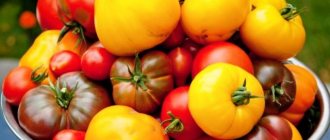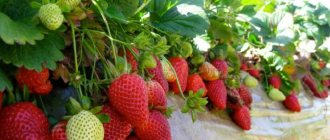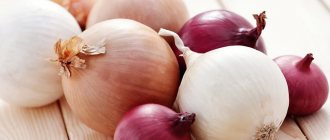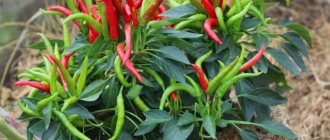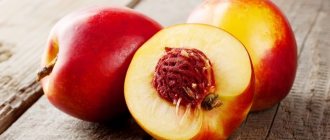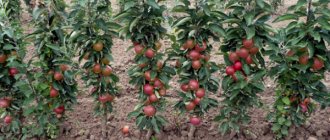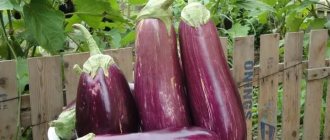Early pears are often found in personal plots - beautiful trees, decorated with fruits like garlands, delight with generous harvests already from July. Many summer pear varieties produce fruits with excellent taste, pleasant aroma and good presentation, and, as a rule, you can eat them straight from the branch.
Fruits that ripen early have a short period of consumption - on average 2-3 weeks
August dew
The tree is low-growing, the crown is of medium density, slightly drooping. The fruits are green with a faint blush and a large number of subcutaneous points, medium in size, short pear-shaped, without ribs. The skin is smooth, dull. The pulp is white, juicy, fine-grained, tender. Winter-hardy and high-yielding variety with high resistance to most pear diseases.
| Entry into fruiting | Tree height (m) | Fruit weight (g) | Harvest | Shelf life (days) |
| For 4 years | 2,5-3 | 110-130 | mid-August | 14 |
Fruit tree care
By following the basic rules for caring for pear trees, you will get a bountiful and healthy harvest:
- 1–2 year old seedlings with a closed root system take root better than older ones, which look stronger, but it is more difficult for them to adapt to a new place;
- in the shade and in crowded conditions, fruit trees may become sick or reduce fertility;
- the plant also does not like cold drafts; if there is one, then it is necessary to protect the pear;
- self-fertile varieties do not need proximity to pollinating trees, but to attract insects, they also need help (spraying with honey solution);
- after watering, be sure to loosen the soil around the tree so that a crust does not form;
- Organic and mineral fertilizers must be given as top dressing. The dosage is selected in accordance with the selected variety;
- During the period of bud formation, you need to spray the plants with Bordeaux mixture to prevent pests. And at the moment the flowers bloom, spray them with a copper-based preparation.
Bere Giffard (Giffard)
The tree is medium-sized, the crown is sparse, spreading and drooping. The fruits are green or greenish-yellow with a blush on the sunny side, regular pear-shaped, smaller than average in size. The skin is thin. The pulp is white, juicy, melting, tender. Winter hardiness is not very high, the variety is resistant to scab, but is severely affected by moniliosis (fruit rot).
| Entry into fruiting | Tree height (m) | Fruit weight (g) | Harvest | Shelf life (days) |
| For 6-7 years | 3-5 | 75-100 | second half of July | 3-5 |
Why is it important to responsibly choose a pear variety before planting?
The variety of varieties of this plant is surprising; there is plenty to choose from. This chance should definitely be taken advantage of; you should not plant a plant on the site that will bring an unwanted harvest or simply become a problem. At the initial stage, you can choose the pear that will develop well in the region and produce tasty fruits. Not all summer residents think about what varieties of pears to plant in the Moscow region; as a result, the tree either does not take root or becomes very large and does not produce a harvest. Growing this tree requires patience, it will remain on your site for decades, which means it makes sense to select it responsibly before planting.
Some choose only early varieties of pears for the Moscow region in order to be able to harvest before the end of the summer period. Others are interested in the best varieties of autumn pears for the Moscow region, because they are perfectly stored throughout the winter. Moreover, if you want to store your harvest for as long as possible, then choose the best winter pear varieties for the Moscow region; they ripen very late, but are stored without problems. In any case, no matter what your preferences and desires are, you should take a responsible approach to choosing the type of wood. You will spend a huge amount of effort and time growing a pear on your plot, you need to make sure that everything is not in vain.
Victoria
The tree is medium-sized, the crown is of medium density, rounded-pyramidal. The fruits are greenish-yellow with a bright purple blush, regular pear-shaped, above average size. The skin is smooth, of medium thickness. The pulp is white, tender, juicy. Winter-hardy and drought-resistant variety, resistant to scab.
| Entry into fruiting | Tree height (m) | Fruit weight (g) | Harvest | Shelf life (days) |
| For 6-7 years | 3-5 | 200-250 | end of August | up to 120 |
Prominent
A late-summer variety selected by VSTISP (authors Yu.A. Petrov and N.V. Efimova), obtained as a result of pollination of the interspecific hybrid VI-53-67 with a mixture of pollen from southern varieties. My Vidnaya was grafted in 2008 as a skeletal branch of the lower tier. Bud vigor is good, branching is moderate, annual growth is powerful, fruiting is almost entirely concentrated on the ringlets.
The variety so far shows good winter hardiness - for example, the Vidnaya graft survived the difficult winter of 2009/2010 without outwardly visible consequences (at that time almost all stone fruits in my garden were seriously damaged). In winters with sharp temperature changes (2012/2013 and 2013/2014), the core of Vidnaya’s annual growths froze, but the remaining tissues were not damaged.
Ripening in the third ten days of August, approximately at the same time as Chizhovskaya. The fruits are quite large, showy, elongated pear-shaped, with a ribbed, uneven surface, and do not fall off when ripe. The main color is greenish-yellow, the outer color is a light orange tan; in hot summers (as in 2014), the blush is more pronounced.
The pulp of the fruit is white, juicy, without granulation, dense, crispy (I really like it). The taste is sweet and sour, somewhat inferior to Chizhovskaya, but Vidnaya is more interesting in terms of the overall impression of the fruit (size, juiciness and consistency of the pulp). I would like to note that following the results of the hot summer of 2014, the taste of Vidnaya fruits turned out to be somewhat better than in previous years.
In a normal summer, they have a clearly defined “varietal” taste, the subjective pleasantness of which can be debated, but in 2014 it turned out to be “disguised”, the result was just a pleasant sour-sweet pear. Obviously, Vidnaya is capable of accumulating more sugars with increasing SAT and is one of the varieties that can improve their taste characteristics when grown south of their breeding zone.
And vice versa, in the current cold and rainy summer, I unexpectedly encountered the fact that the fruits of Vidnaya, having absolutely not gained their weight and taste, prematurely “overripe” on the tree in early August. That is, the fruits turned yellow and began to crumble, but their taste remained empty with astringency, the flesh softened and became “cotton.” As a result, Vidnaya's entire harvest went into compost.
A significant disadvantage of the variety is the short shelf life of the fruit. After just a week of storage in the refrigerator, pears begin to brown in the core, and the pulp begins to lose its juiciness and taste. Removing when green to increase shelf life is ineffective, since after the same week of ripening in the refrigerator, the pulp of the fruit begins to deteriorate, so Vidnaya is one of the varieties that are best consumed directly from the tree.
The period of consumption can be extended by selectively, in several stages, picking the fruits; fortunately, the ripening of Vidnaya’s fruits is somewhat extended in time. When picking, you don’t have to worry too much about the degree of ripeness of the fruits, because Even not fully ripe pears have good taste (the taste is slightly less pronounced, but there are no hints of astringency or excessive acidity), and in terms of juiciness they are even somewhat superior to fruits in a state of full ripeness.
In general, this is a good amateur variety for the area where it was bred. Considering the short shelf life of the fruits, it is hardly advisable to have Vidnaya as a separate tree (unless it is possible to quickly consume a large number of fruits fresh or for processing). However, the variety deserves a separate skeletal branch on a multi-varietal tree.
Duchess summer (Williams)
The tree is medium or low growing, the crown is dense, wide, pyramidal. The fruits are bright yellow with many small dots, medium or large, oblong pear-shaped, with an uneven surface. The skin is thin. The pulp is white or creamy, juicy, tender. The variety has average winter hardiness and drought resistance. The tree is extremely rarely affected by scab, but often by aphids and copperheads.
| Entry into fruiting | Tree height (m) | Fruit weight (g) | Harvest | Shelf life (days) |
| For 5-6 years | 4-5 | up to 180 | end of August | up to 45 |
Clapp's Favorite
(Clapp's Favorite)
Review
Clapp's Favorite pears are beautiful and delicious. But the disadvantages of the variety make you think about whether it is worth planting. During strong winds in the summer, this particular pear broke. Others endured the winds calmly. The shedding of the variety is upsetting. Once we went to the seaside for about 5 days. The pears were still hanging quite unripe. And when they returned from the sea, almost all of them were ripe, hit and crashed. Be sure to watch for ripening and pick pears before they ripen, i.e. solid. We rent in 3-5 days. Then they sit and ripen at home, becoming very tasty and juicy. Not stored. Our wasps love these pears. For its taste benefits, the variety can be planted near the house. But about the dacha... we wouldn’t, because it’s not always possible to arrive at the dacha on time and collect the fruits.
Description.
Summer variety. Removable fruit ripeness occurs in August.
The tree is medium to vigorous. At a young age it grows quickly. The crown is broadly rounded, the branches hang down slightly. The wood is fragile.
The fruits are above average size. The main color of a ripe pear is yellow, with blush on the illuminated side of the fruit.
When ripe, the fruits of the Klapp's Favorite pear are prone to shedding. Therefore, they are removed a few days before maturity.
The variety is self-sterile. The best pollinators: Bere Giffard, Williams, Forest Beauty, Olivier de Serre.
The fruiting period begins at 7-8 years. On light soils it begins to bear fruit earlier than on heavy clay soils. It grows poorly on moist soils, poorly drained, saline and with a close pebble layer. In dry conditions, the fruits are small and severely damaged by copperhead.
Fruits regularly.
Productivity is high.
Winter hardiness and drought resistance are high.
Resistance to scab is weak.
Cathedral
The tree is medium-sized, the crown is of medium density, regular conical shape. The fruits are light yellow with a bright blush, medium or less than medium size, regular pear-shaped. The skin is tender, smooth, shiny, slightly oily. The pulp is white, tender, juicy, medium density, semi-oily, fine-grained. Winter-hardy variety with average yield, resistant to scab.
| Entry into fruiting | Tree height (m) | Fruit weight (g) | Harvest | Shelf life (days) |
| For 2-3 years | 3-5 | 110 | early August | 12 |
Late
Good resistance to pests, diseases, and natural disasters has made late varieties of pears in demand among amateurs and professionals. Almost always these are hard pears that ripen when picked. Can be stored for months.
Miraculous
Hybrid variety. A low, pyramidal tree. It blooms at the very beginning of spring; slightly elongated greenish pears turn yellow with the onset of autumn. They are large (average weight 145-215 g), sweet, with a delicate aroma and texture. This is a high-yielding variety with good resistance to cold and disease. Ripe specimens do not fall off for a long time and are stored.
Hera
Spreading trees of medium size. High-yielding, unpretentious, with good frost resistance. They are recognized by their large (almost 300 g) fruits, which appeared as a hybrid of two varieties. The skin of ripe pears is of medium thickness, green-reddish. The creamy pulp is aromatic, sweet, with slight sourness and a fine-grained texture. They can maintain their condition for months.
Bere Ardanpont
An old (1759) hybrid variety of Belgian origin, named after the breeder who bred it. Ripe pears are large, have green with a reddish, not particularly thick skin. Sweet, white, fleshy inside. In order for them to appear regularly and maintain their beauty and taste, the tree requires special conditions: constant access to sun, heat, and moisture. Bere Ardanpon is a bright representative of the tree on a dwarf rootstock. It is not tall, but strong, winter-hardy. Only young seedlings need to be wrapped for the winter.
Olivier de Serres
A variety from France, named after the breeder who created it. Trees of medium height, with a compact crown, almost round glossy leaves and upward-looking branches covered with brownish, slightly flaky bark. Visually, the pears are of medium size, but massive; specimens heavier than 400 g are not uncommon. The thick red-spotted skin hides the flesh under the lumpy surface. It is white, sweet, juicy, with a delicate aroma. In order for such good pears to appear, annual autumn pruning of branches and additional shelter for the tree in case of a harsh winter are required. Although the variety is frost-resistant. The harvest is ready by the beginning of September and can remain marketable until spring.
Belarusian
The variety is named after the place of breeding - Belarus. Resistant to frost and disease. It is a dwarf pear in height. The branches are directed upward, the bark is gray-brownish smooth. The harvest ripens in the first ten days of September. The skin is dull and rough, of medium thickness. The reddish-orange background is broken up by small black spots. The taste of the snow-white pulp is distinguished by delicate sourness. These are very juicy pears. Not every season produces a good harvest; for it to appear, you need to plant pollinated varieties nearby.
Dessert Rossoshanskaya late
A hybrid developed in the early 1950s. The plant is strong, of medium height, with a branched “slender” pyramidal crown. The bark is ash-colored, young shoots look up. Round fruits are collected on branches in groups of six. The harvest appears two to three years after planting. The fruit ripens by early September and, in a good microclimate, remains in good condition until January. Ripe pears of medium size, 5-6 kg, with brown-red soft skin. Sweet, juicy.
Lada
The tree is of medium height, standard type, the crown is of medium density, pyramidal (cone-shaped) when fruiting. The fruits are light yellow with a light red blurry blush, medium in size, obovate in shape. The skin is thin and smooth. The pulp is yellowish-white, medium juicy, fine-grained, medium dense. Winter-hardy, high-yielding variety, resistant to scab.
| Entry into fruiting | Tree height (m) | Fruit weight (g) | Harvest | Shelf life (days) |
| For 3-4 years | 3-5 | 100-110 | July | up to 60 |
Skorospelka from Michurinsk
Early summer variety S.P. Yakovlev, obtained from crossing a hybrid (Ussuri pear x Bere Ligelya) with the Citron de Carm variety. Having been grafted from me in 2009 as a skeletal branch of the second tier, the variety began to bear fruit only in 2014, i.e. proved to be extremely slow-growing (while all other varieties bloomed in the crown a year, maximum two after grafting).
The taste of the fruit is not bad, but nothing more - according to my feelings, it is inferior to Chizhovskaya and Lada, i.e. around 4.0 points. The size of the fruit in my conditions turned out to be very small, significantly lower than even the 85 grams declared by the originator - only 30 grams. Perhaps this is a reaction of the variety to infertile sandy soil, because I don’t have to talk about overload with the harvest as a possible reason for the shrinking of fruits.
For many years now I have been observing the same picture on Skorospelka from Michurinsk: the ringlets that form quite abundantly do not bloom the next year, nor the year after, nor the year after - each season they produce only rosettes of leaves, and that’s all. Last year, one ringlet bloomed on an entire branch, this year several bloomed and a dozen fruits bore (and this is surprising, because according to the reviews of many gardeners, their variety shows very high productivity).
At the same time, the branch itself is well developed, successfully overwinters (it also survived the unfavorable winter of 2009/2010), produces good growth, etc. As a result, of all the declared advantages of the variety, only one appeared in my soil and climatic conditions - a very early ripening period (the last days of July). I think that this alone is not enough, I decided to abandon Skorospelka from Michurinsk and regraft the entire branch with other varieties.
Severyanka
The tree is medium-sized, the crown is of medium density, wide-pyramidal. The fruits are yellow with green spots, small, truncated-conical, non-one-dimensional. The skin is dense and dull. The pulp is creamy, juicy, medium density. A highly winter-hardy, high-yielding variety, resistant to most pear diseases.
| Entry into fruiting | Tree height (m) | Fruit weight (g) | Harvest | Shelf life (days) |
| For 3-4 years | 3-5 | 80-120 | early-mid August | 14 |
Varieties of summer pears for cold regions of Russia
We recommend reading our other articles
- How to increase egg production of chickens
- Bush zucchini
- Flowering shrubs
- Planting strawberries in autumn
For Siberia and the Urals, choosing a good summer pear variety may not be easy. Of course, many summer species will have time to produce a harvest in these regions, since the fruits appear early, but not all of them are resistant to prolonged cold and severe frosts. So, which summer pear varieties are suitable for growing in cold regions of Russia and countries with a similar climate:
Varieties of summer pears for cold regions of Russia
- “Severyanka” is a delightful variety for cold regions. The tree grows up to 5 meters. Pears are yellow-green, truncated-conical. The skin is matte and dense. Weight – 100 g on average. The pulp is creamy, medium density. The variety is resistant to severe frosts and most diseases. The first fruits are harvested from the beginning of August and they last up to 2 weeks.
- “Krasulya” is a winter-hardy crop that produces the first harvest in the 5th year. The tree is disease resistant. Fruits weigh 80-120 g. The skin is orange-red. The pulp is creamy, fine-grained. Fruits of dessert taste. Productivity – 120 c/ha. After harvesting from the tree, fruits can remain for up to 2 weeks.
Interesting!
The Krasulya pear variety has spines on the tree. Most often it is propagated by grafting onto wild animals.
- “August Dew” is a low-growing, winter-hardy variety. Fruits in 4 years after planting. The tree has a medium dense crown, so it is not difficult to care for. The pears are green in color, with an abundance of subcutaneous points, and ripen in mid-August. The fruit size is average - 110-130 g. The skin is more matte than shiny, smooth. The pulp is juicy, white, fine-grained. There is immunity to many diseases. After harvesting, the fruits are stored for up to 2 weeks.
- "Sibiryachka" is a tall species for the cold regions of Russia. The fruits are small, 50 g on average, sweet and sour, with astringency. Not everyone likes the taste, but for processing there is no better option. Siberian can be preserved in its entirety, made into jam, preserves, pear puree, boiled and baked, fried - in general, it tolerates any type of processing. The harvest is harvested from the beginning of August and is stored for 20 days. The tree is partially self-fertile, which greatly simplifies cultivation.
Growing pears in the northern regions of Russia and countries with similar climatic conditions is not easy, but possible. Summer varieties are an ideal choice; they have time to harvest and even restore strength before the onset of frost. But you need to purchase only the most frost-resistant species, for which long, cold winters are not dangerous.
Fabulous
The tree is tall, the crown is dense, narrow pyramidal. The fruits are green, large, pear-shaped. The skin is dry, dull. The pulp is white, very juicy, tender, medium density, semi-oily. Winter-hardy variety with average yield, resistant to scab and pear gall mite.
| Entry into fruiting | Tree height (m) | Fruit weight (g) | Harvest | Shelf life (days) |
| For 5-7 years | more than 5 | 180-250 | mid to late August | 10 |
Chizhovskaya (Chizhevsky)
The tree is medium-sized, with a dense pyramidal crown. The fruits are green-yellow with a pink blush, medium size, pear-shaped. The skin is thin and smooth. The pulp is almost white, melting, semi-oily. Winter-hardy variety, resistant to scab and other crop diseases.
| Entry into fruiting | Tree height (m) | Fruit weight (g) | Harvest | Shelf life (days) |
| For 3-4 years | 3-5 | 110-140 | August | 120 |
If you still don't have a single summer pear in your garden, be sure to fix that. And then you will be able to enjoy your own fragrant fruits in the middle of summer.
Differences between summer varieties
Early, or summer, varieties of pears are in great demand all over the world. Unlike autumn and winter species, their fruits ripen in a short time - in the summer. The harvest is always harvested as it ripens. Previously, fruits of consumer ripeness were removed only for sale, to make it easier to transport them over long and short distances.
Summer varieties of pears cannot be stored for a long time.
The fruits of early pears have a rich pear taste and pronounced aroma. Most often, they have soft flesh, which is why they are removed from the tree a little earlier for transportation - so as not to wrinkle on the road. But even if they were picked before the deadline, ripening occurs very quickly.
Summer varieties of pears cannot be stored for a long time. They are consumed for several weeks, or even days! Even on a tree they do not hang for a long time after ripening. Some varieties are prone to falling from the tree.
Interesting!
Pear wood is very durable, which is why it has been used for making furniture since ancient times.
